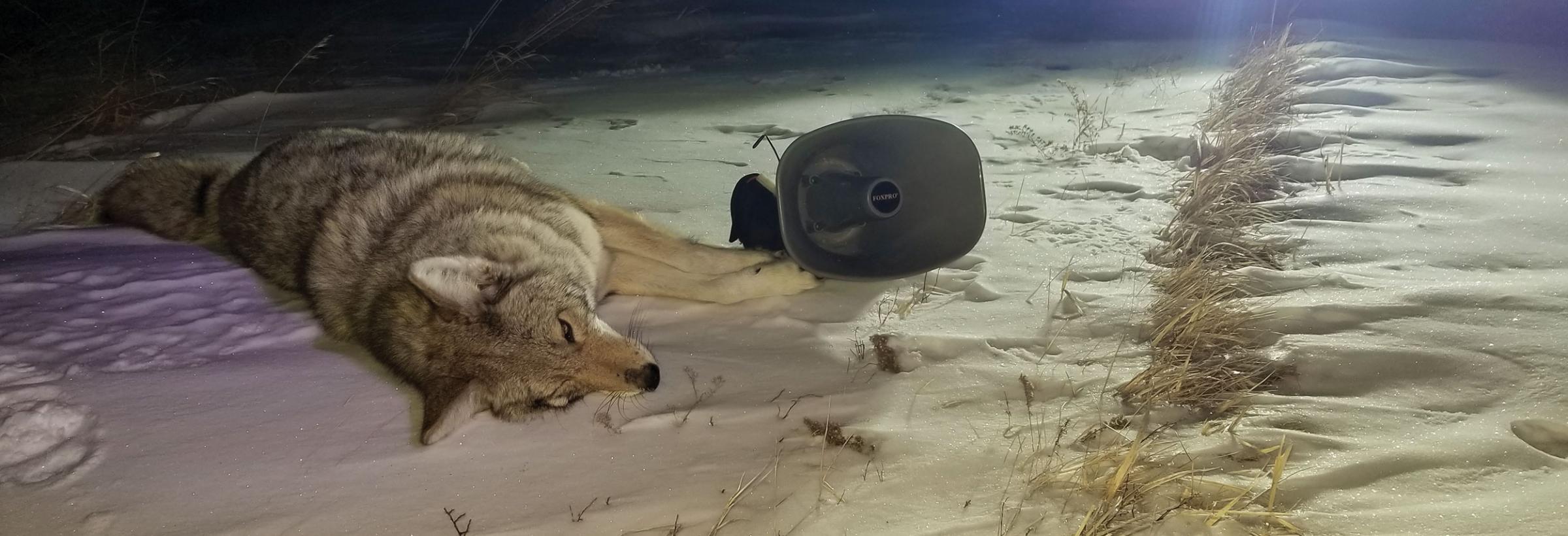
History of Night Hunting
Night hunting of coyote and fox has been a controversial topic the last several years.
Some hunters have embraced new technologies, such as night vision and thermal imaging equipment, that give hunters an advantage over the nocturnal predators they enjoy pursuing.
Other coyote and fox hunting enthusiasts believe those technologies go beyond fair chase and give hunters too much of an advantage. And there is some speculation that the addition of night hunting equipment increases pressure and further educates the animals and may be counterproductive to overall coyote hunting success.
No matter which side of the fence you land on, here is a little background into the topic.
Night hunting of coyote and fox was first allowed during the winter of 1991-92. When the season is held has remained relatively consistent since that time, opening annually in late November or early December and closing mid-March. The timing of the night hunting season has generally been an acceptable compromise between including prime fur season and good snow cover, while avoiding conflicts with other hunting seasons, such as the deer gun season.
Early on, night hunting for these predators was typically done on nights with good moonlight and snow cover, so that hunters could see the animals coming toward them in response to their predator call, as artificial lights were prohibited by state law.
The first significant change to these regulations came during the 2016-17 season, when by proclamation the North Dakota Game and Fish Department began allowing the use of night vision and thermal imaging equipment. However, state law continued to prohibit the use of infrared illuminators in conjunction with night vision because it was a form of “artificial light.”
Infrared illuminators are a common component on night vision optics. As such, during the 2019 legislative session, fur harvesters successfully lobbied the legislature for a change. When the ink dried on HB 1412, state law now allows the use of artificial light, night vision, thermal vision, or infrared light with a power source of not more than six volts while hunting afoot for coyote, fox, raccoon, or beaver during the open season. The artificial light must produce a red, green, or amber color when used in the hunting of coyote, fox, raccoon, or beaver, except when taking a raccoon treed or at bay
The legalization of new technologies has resulted in some hunters wanting to use their equipment to help livestock producers alleviate depredation caused by coyotes outside of the night hunting season. State law (ND Century Code 20.1.-07-04) already allows for this, whereby a producer may authorize a hunter as their agent in helping remove depredating coyotes outside the traditional night hunting season.
Night hunters who are assisting with removal of depredating coyotes outside the night hunting season are encouraged to notify their local game warden as to their activities prior to going afield, in case the night hunters are falsely reported by the public as engaging in illegal activities.
Night Hunting Season
(see regulations for dates)
Coyote and fox (red and gray) may be hunted statewide at any hour. Any person who engages in hunting from 30 minutes after sunset to 30 minutes before sunrise must hunt exclusively on foot. Allows the use of artificial light, night vision, thermal vision or infrared light with a power source of not more than 6 volts. The artificial light must produce a red, green or amber color. The use of archery equipment, including crossbows, is prohibited until after the close of the archery deer season.
